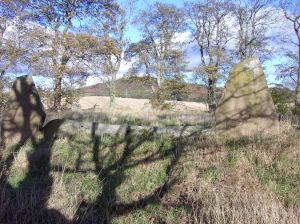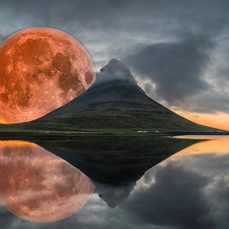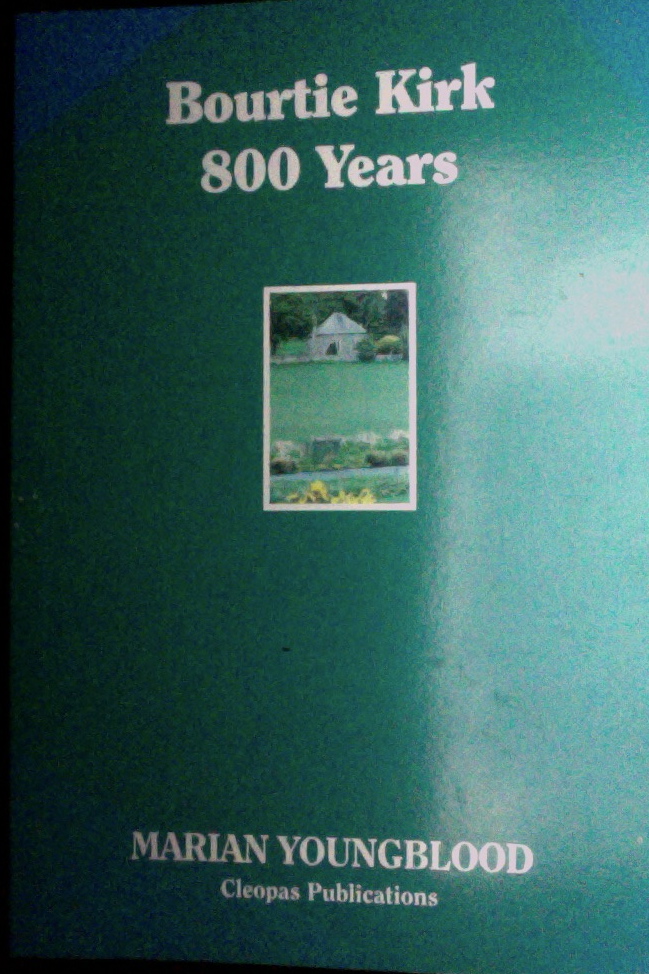Candlemas: Forward or Back
“If Candlemas be dull and cool
Half the winter was bye at Yule
If Candlemas be fine and fair
Half the winter’s to come – and mair”
Scots wisdom – Anonymous
Today is Candlemas: February 2nd in the ancient Celtic calendar signified the half – way point, a cross-quarter day, between midwinter and spring. It’s pretty amazing we’ve lasted thus far: three storms and more threatening; it’s already six weeks since solstice and in another six we’ll have reached the vernal equinox. Looking at Scotland’s current snowy landscape (or, more immediate, trudging through it), that calendar fact seems hard to believe.
Old countrymen before the agricultural revolution – farmers and field hands – kept an inner calendar, depending on the direction of the wind, hours of daylight and signs from birds and wild animals for their information.
We seem to have lost the knack.
One might blame it on global warming, but that’s merely an excuse. We spend less time outdoors now as a culture than we ever did. Despite ‘power runs’, jogging, (with natural sounds deadened by earphones strapped to head) and weekend walks (complete with cellphone), we are constantly reminded by the technology of our own devising that we are no longer creatures of the corn.
We have evolved to become slaves to the newspaper, the television set, radio, telephone and computer media and have stepped out of our former selves, the ones who tuned into birdsong, the opening of a snowdrop, the smell of first growth in the forest, lengthening days of sunlight.
Some would say we can’t be blamed for the way society drifts: isn’t it important to keep up with the news? to judge if politicians are doing their job? Don’t our livelihoods depend on our connection to what’s happening in the ‘real’ world?
To my mind it’s a matter of choice. Some of the thirty-somethings these days are so concerned with their career in the City, commissions on deals that make them millions, the need to unwind on a skiing holiday mid-season, the latest SUV, that they don’t notice that their youth is slipping away. When grandparents used to advocate a ‘back-to-basics’ approach, a ‘breath of fresh air’, or a break from concentrating on the ‘almighty dollar’; they had no idea our culture would so soon become divorced from those concepts so radically; would be so far down the road to technological dependence that we no longer recognize the sound made by a robin in spring.
What has all this to do with Candlemas? you may ask.
Before there were man-made calendars, there was a cosmic one: the language of light spoken by the sun on its annual journey. Our neolithic ancestors recognized the solar (and lunar) rhythms and built ‘calendars’ in stone, dragging massive megaliths to create stone circles whose shadows cast a moving ‘hand’ across the face of the earth like a sundial or the hands of a clock. In the Northeast of Scotland that particular variation of stone circle usually takes the form of a window in stone – a recumbent giant flanked by the two tallest monoliths in the southwest quadrant of the circle. This window invariably faces the point on the horizon where the midwinter sun sets and, conversely, where the midsummer full moon also sets.There were other points marked on the calendar of stones. Assuming the recumbent and flankers stand at ‘seven o’clock’ in a recumbent stone circle where heights always diminish towards the northern arc, the circumference stone at ‘twelve o’clock’ marks the midsummer sunset point on the horizon viewed from within the ‘platform’ – a rectangular space next to the recumbent group. This is beautifully portrayed in settings such as Midmar (map ref. NJ 699 065), Sunhoney (NJ716 057), above right, or even the ruined Kirkton of Bourtie circle (NJ 801 249), where this unremarkable stone acts as the dial point for the sun to come to rest on the longest day of the year. Not content with marking the four quarters, stone circle stones also point to cross-quarter days, too. At Easter Aquorthies (NJ733 208) near Inverurie in central Aberdeenshire, illus. top left, in addition to a solid block of red jasper which marks the equinoctial sunrise on the east of the circle, its two neighbouring perimeter stones draw the distinctive shadows of recumbent and flankers (the ‘window’) into their own minor magical precinct, until it disappears to a point of nothingness at sunset on Candlemas.
These amazing stone calendars served generations of early farmers through bronze age, iron age and early-historic times, until the arrival of the Celtic Colginy Calendar and its Roman counterpart, the Julian calendar, both originally, like all early societies, based on a lunar month. The sixteenth century Gregorian calendar altered our thinking to calculating almost exclusively in solar time. The oriental calendar, however, like the Ethiopian, Vedic, Muslim and some African calculations, remains lunar.
Candlemas, before Gregorian calendar takeover, was held as a celebration of light on the first new moon in February. It is significant that Losar, Tibetan New Year, still takes appearance of the New Moon in February each year as its calendar starting date: this year Losar falls on February 15th.
It is coincidentally the first day of the oriental Year of the Tiger.
Gregorian time did not totally demolish earlier lunar times. They were seen in Rome—and in Roman catholicism generally—as ‘pagan’ (from Latin, paganus, a countryman) and therefore ‘ignorant’ of Christian belief.
Candlemas had been held by country people as a major light festival from pre-Christian times: Celtic Imbolc (Oimelc), in northern latitudes celebrated the first day when light from the sun feels warm on the face; when larks start into song, when the wren, a magical Celtic bird, the ‘Queen of Heaven’, begins to build her nest. Lambs traditionally started life in February and ewes began lactation. The earth came alive. The farming year looked forward rather than back. So it served the Roman papal calendar well to continue the festival. It, too, was celebrated with light, but held as a mass for Mary, Queen of Heaven (not the bird) and Bride, under the light of a thousand cathedral candles, which gave it its name.Bride-Brigid-Brigantia Original Goddess of Earth and Light
One pre-Celtic remnant of paganism remains in the, mostly ridiculed, American Groundhog Day. On this day the groundhog—a ridiculous figure, poor creature—comes out of his winter hole. If he sees his shadow he returns to his hole for another six weeks’ sleep. If he does not see it, he resolves to leave hibernation and get on with spring. It has resonance with the Scots version in our opening lines. Another is:
Bride put her finger in the river
On the Feast Day of Bride
And away went the hatching mother of the cold. — Carmina Gadelica
Gregorian calendar festivals became more rigid after the Reformation and by 1660 many previous celebrations which smacked of paganism were banned. One of these is worth resurrecting. In the Highlands and Islands of Scotland, before it was abolished, a ritual was held on Bride’s Feast Day the calendrical opposite of that held by all farming communities until the first European War of creating the harvest corn dolly which was carried round the fields to bless the harvest.
In the Islands, it was believed that on the eve of Là Fhéill Bhrìghde (Feast of Bride), the Old Woman of Winter, the Cailleach, journeys to the magical isle in whose woods lie the miraculous Well of Youth. At the first glimmer of dawn, she drinks the water that bubbles in a crevice of a rock, and is transformed into Bride, the fair maid whose white wand turns the bare earth green again.
On Bride’s Eve in the Islands young girls made a female figure from a sheaf of corn, kept in reverence from the previous year’s harvest. They decorated it with colored shells and sparkling crystals, together with snowdrops and primroses and other early spring flowers and greenery. An especially bright shell, symbol of emerging life, or a crystal was placed over its heart, and called ‘Bride’s guiding star’. They dressed themselves in their own finery and carried their effigy through the village on Bride’s Feast Day to invoke the light.
Harvest warm (Summer) Mother turned ancient cold (Winter) Crone reborn as fresh (Spring) youthful Virgin. And the cycle continues.
There is much to glean from these lovely old tales, fast becoming trivialized and forgotten.
One might suggest that our culture is in its last days, its death throes, too driven to see into either past or future.
Like the prelude to Roman decline and fall when successive emperors and the Senate prescribed bread and circuses as an opiate for the masses, our opiates – television, supermarkets, football games and expensive toys – provoke a ‘dumbing down’ fueled by corporations with political power and access to billions. We are not encouraged to draw lovingly from our past in order to find a gentler path in our future. We are not encouraged to question where we are going; where we as a global community might genuinely contribute to the care of our planetary mother, to save her from destruction; where we her children might become reborn, rise from our own ashes. As Carl Sagan says, the Universe is within us. We are capable of so much more than we allow.
If Candlemas has a message, it is neither to look forward or backward, but to carry with us the best of our past, and yet to anticipate the most miraculous for our future. And to hold in our consciousness the reality, the fragility of the Earth, the planet which is our home, our only home. Therein lies all creativity.















